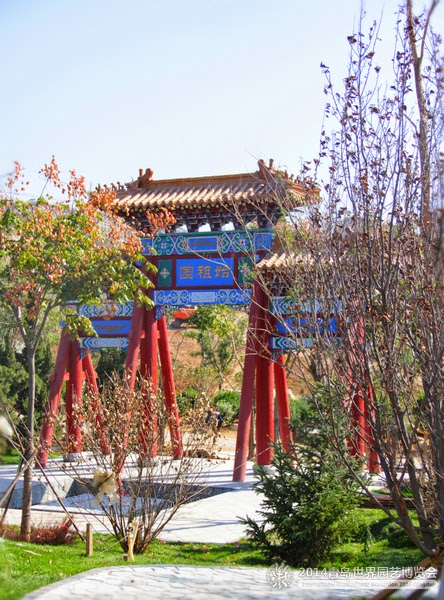Tagetes
Tagetes is a genus of 56 species of annual and perennial, mostly herbaceous plants in the sunflower family (Asteraceae or Compositae). The genus is native to North and South America, but some species have become naturalized around the world. One species, T. minuta, is considered a noxious invasive plant in some areas.
Description
Tagetes species vary in size from 0.1 to 2.2 m tall. Most species have pinnate green leaves. Blooms naturally occur in golden, orange, yellow, and white colors, often with maroon highlights. Floral heads are typically (1-) to 4–6 cm diameter, generally with both ray florets and disc florets. In horticulture, they tend to be planted as annuals, although the perennial species are gaining popularity.
Depending on the species, Tagetes grow well in almost any sort of soil. Most horticultural selections grow best in soil with good drainage.
Nomenclature
The name Tagetes is from the name of the Etruscan Tages.
The common name in English, "marigold", is derived from "Mary's gold", a name first applied to a similar plant native to Europe, Calendula officinalis. See marigold for other plants commonly called marigold. In Nepal, it is called 'शयपत्री' that means hundred-leafed flower, referring to its many florets per head.
The most commonly cultivated varieties of Tagetes are known variously as African marigolds (usually referring to cultivars and hybrids of Tagetes erecta, although this species is not native to Africa), or French marigolds (usually referring to hybrids and cultivars of Tagetes patula, many of which were developed in France, although the species is not native to that country). The so-called signet marigolds are hybrids derived mostly from Tagetes tenuifolia.
Tagetes minuta is the source of commercial "Tagetes oil" used in industry. It is now a naturalized species in Africa, Hawaii, and Australia, and is considered an invasive species (weed) in some regions.
Cultivation and uses
Depending on the species, marigold foliage has a musky, pungent scent, though some varieties have been bred to be scentless. It is said to deter some common insect pests, as well as nematodes. Tagetes species are hence often used in companion planting for tomato, eggplant, chili pepper, tobacco, and potato. Due to antibacterial thiophenes exuded by the roots, Tagetes should not be planted near any legume crop. Some of the perennial species are deer-, rabbit-, rodent- and javalina or peccary-resistant.
T. minuta (khakibush or huacatay), originally from South America, has been used as a source of essential oil for the perfume and industry known as tagette or "marigold oil", and as a flavourant in the food and tobacco industries. It is commonly cultivated in South Africa, where the species is also a useful pioneer plant in the reclamation of disturbed land.
The florets of Tagetes erecta are rich in the orange-yellow carotenoid lutein and are used as a food colour (INS-number E161b) in the European Union for foods such as pasta, vegetable oil, margarine, mayonnaise, salad dressing, baked goods, confectionery, dairy products, ice cream, yogurt, citrus juice and mustard. In the United States, however, the powders and extracts are only approved as colorants in poultry feed.
Marigolds are recorded as a food plant for some Lepidoptera caterpillars including the dot moth, and a nectar source for other butterflies. They are often part of butterfly gardening plantings. In the wild, many species are pollinated by beetles.
More :
http://en.wikipedia.org/wiki/Tagetes



















































